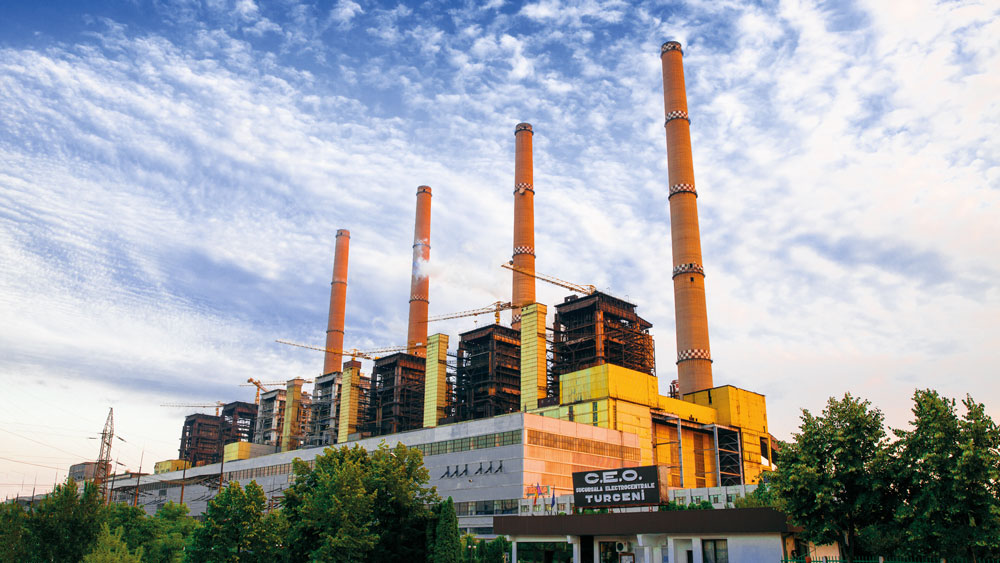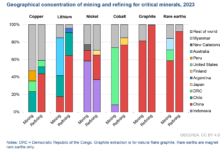Do We Turn Off the Light or Pay for the Survival of Oltenia Energy Complex?
To avoid the insolvency or even bankruptcy of Oltenia Energy Complex, the Executive has prepared a mechanism to support the largest energy producer in Romania. If the plan of the Government in Bucharest receives green light from Brussels, Oltenia Energy Complex will receive up to RON 10.5bn for 10 years. The saving solution means introducing a special tax, as of 2020, that all electricity consumers will pay.
The new tax, which will be called adequacy tax, would be highlighted separately in the energy bills, and impact to consumers will amount to RON 0.033/kWh in the first year, 2020, following to be gradually reduced, to RON 0.002/kWh in 2030. “Currently the regulated tariffs for household consumers are around RON 0.412/kWh, so the adequacy tax will increase these tariffs by 8% in 2020, 4.8% in 2021 and 4.3% in 2022,” according to the support scheme prepared. The Executive mentions however that the support mechanism for Oltenia Energy Complex will be assessed annually by ANRE, and the value of this aid or the period in which it will be granted can decrease depending on the energy capacities that appear in the market.
Money for emission allowances
The additional money that the energy producer will receive in this way will be used to pay part of the emission allowances that Oltenia Energy Complex is required to purchase. Analyses conducted by the Ministry of Energy show that during the 10 years of application of the support scheme the thermal energy producer will pay from own sources 78.8 million allowances, and from the money that it would collect from the adequacy tax – 67.7 million.
For this year, Oltenia Energy Complex has the obligation to pay emission allowances worth RON 1.6bn.
Last year, it paid RON 1.45bn, for which it contracted loans of RON 500mln from six banks, with state guarantees.
The thermal power plants of Oltenia Energy Complex, vital for the National Power System
The evaluation of the future support mechanism was based on a study on the adequacy of the National Power System (NPS), conducted by Transelectrica, which showed that without the operation of Oltenia Energy Complex, Romania will not be able to ensure its electricity demand, even with imports to the maximum technical extent possible, and prices would increase significantly.
The conclusions of the study, which will be presented in Brussels, show that keeping operational the production capacities of Oltenia Energy Complex until they can be replaced by new production capacities with low emissions, is a matter of national security.
In the event of stopping the capacities of Oltenia Energy Complex, by increasing the electricity price by around 70%, the latter would reach around EUR 0.136/MWh, thus seriously affecting the national economy, through the risk of relocation of major processing industries (aluminium, steel etc.), with global marketplaces.
What does the adequacy study show
The study analysed several scenarios of evolution of the production capacity received from producers, of domestic consumption, of net import/export capacities of the Power Transmission Grid (PTG) from the PTG Development Plan for 2020-2029. Taking into account the investment projects for interconnection of Transelectrica for the period 2019-2030, the degree of interconnection will increase in time, as investment projects are completed, from a value of the net interconnection capacity of 1.5 GW in 2010 to 2.7 GW in 2025 and 3.6 GW in 2030.
However, in all the three scenarios analysed there is only one conclusion: without the thermal power plants of Oltenia Energy Complex, Romania will be forced to turn off the light.
Scenario 1
This scenario considered a peak load net consumption level during winter for normal weather conditions. Regarding the non-usable capacities, the following were considered:
- 100% of the installed capacity in photovoltaic power plants;
- 70% of the installed capacity in wind power plants;
- 55% of the installed capacity in hydropower plants in rivers or reservoirs;
- 320 MW at Hunedoara Energy Complex starting with 2022 following the financial difficulties and compliance with environmental requirements;
- 197 MW at CET Govora starting with 2022 following the financial difficulties and the fact that the power plant depends on the primary resource coming from Oltenia Energy Complex;
- 44 MW at CET Govora starting with 2020. It was considered that the new gas-fired group, estimated to be commissioned in 2020, will not be completed, given the financial difficulties;
- At CET Galati, the net capacity available of 352 MW in 2019, was considered diminished to 156 MW in 2020 and 2021 and 0 MW respectively starting with 2022. This situation is generated by the fact that it has been in insolvency since 2014, with the real risk of going bankrupt.
Conclusion: The results show that in 2022, the first year when Oltenia Energy Complex will not have any operational group (according to the scenario without support mechanism), the missing capacity for the peak load is approximately 2,800 MW, and the import capacity of PTG is 1,800 MW. Also, during 2023-2027 the missing capacity is higher than the import capacity of PTG.
Scenario 2
This scenario considered severe weather conditions (cold winter). In addition to Scenario 1, an increase in the net domestic consumption by 200 MW and the lack of primary source for wind power plants (no wind) were considered.
Conclusion: The results show that in the entire period 2020-2030 the missing capacity from the peak load is higher than the import capacity of PTG. For 2022 the difference between the missing capacity from the peak load and the import capacity of PTG is 2,022 MW, which represents the use at full capacity of the entire capacity currently available of Oltenia Energy Complex.
Scenario 3
In addition to Scenario 2, this scenario takes into account potential problems in the natural gas transmission network modelled through a non-usable capacity of 850 MW.
Conclusion: The difference between the missing capacity from the peak load and the import capacity of PTG increases for the entire analysed period, in 2022 reaching 3,000 MW over the production capacity currently available at Oltenia Energy Complex.







